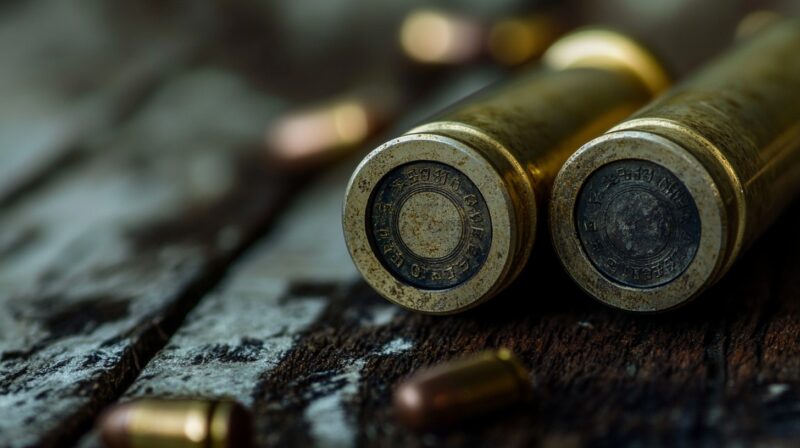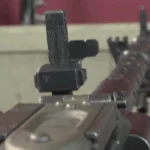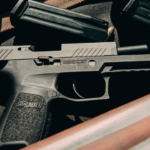Shotgun ammunition comes in various forms, each designed to serve a specific purpose.
Birdshot, buckshot, and slugs represent the three primary types of shotgun loads, and understanding their distinctions can significantly impact performance and effectiveness.
Each type of shotgun ammo has its advantages, dictated by pellet size, range, and impact.
With so many options available, knowing the differences will help shooters optimize their shotgun’s performance for any situation.
Shotgun Shell Basics
- Hull: The hull serves as the outer casing that houses all other elements.
- Primer: At the base of the shell lies the primer, which ignites the powder when struck.
- Powder (Propellant): The powder burns rapidly to generate pressure, propelling the payload forward.
- Wad: Positioned between the powder and projectiles, the wad acts as a barrier that seals gases behind the shot, protecting the barrel and helping deliver consistent patterns.
- Projectiles: These vary depending on the intended use:
- Birdshot: Small pellets used primarily for hunting birds and small game.
- Buckshot: Larger pellets suitable for hunting medium-sized game or self-defense.
- Slugs: Single, solid projectiles designed for maximum power and accuracy over longer distances.
Shotgun gauges refer to the shell’s diameter, influencing power and recoil:
- 12-Gauge: The most common gauge, known for its balance of versatility and power, is suitable for hunting, sport shooting, and self-defense.
- 20-Gauge: Popular for smaller shooters or less demanding tasks due to its reduced recoil.
- 10-Gauge: A larger, powerful option often reserved for specialized applications such as waterfowl hunting.
- .410 Bore: The smallest option, ideal for lightweight shooting scenarios and small game hunting.
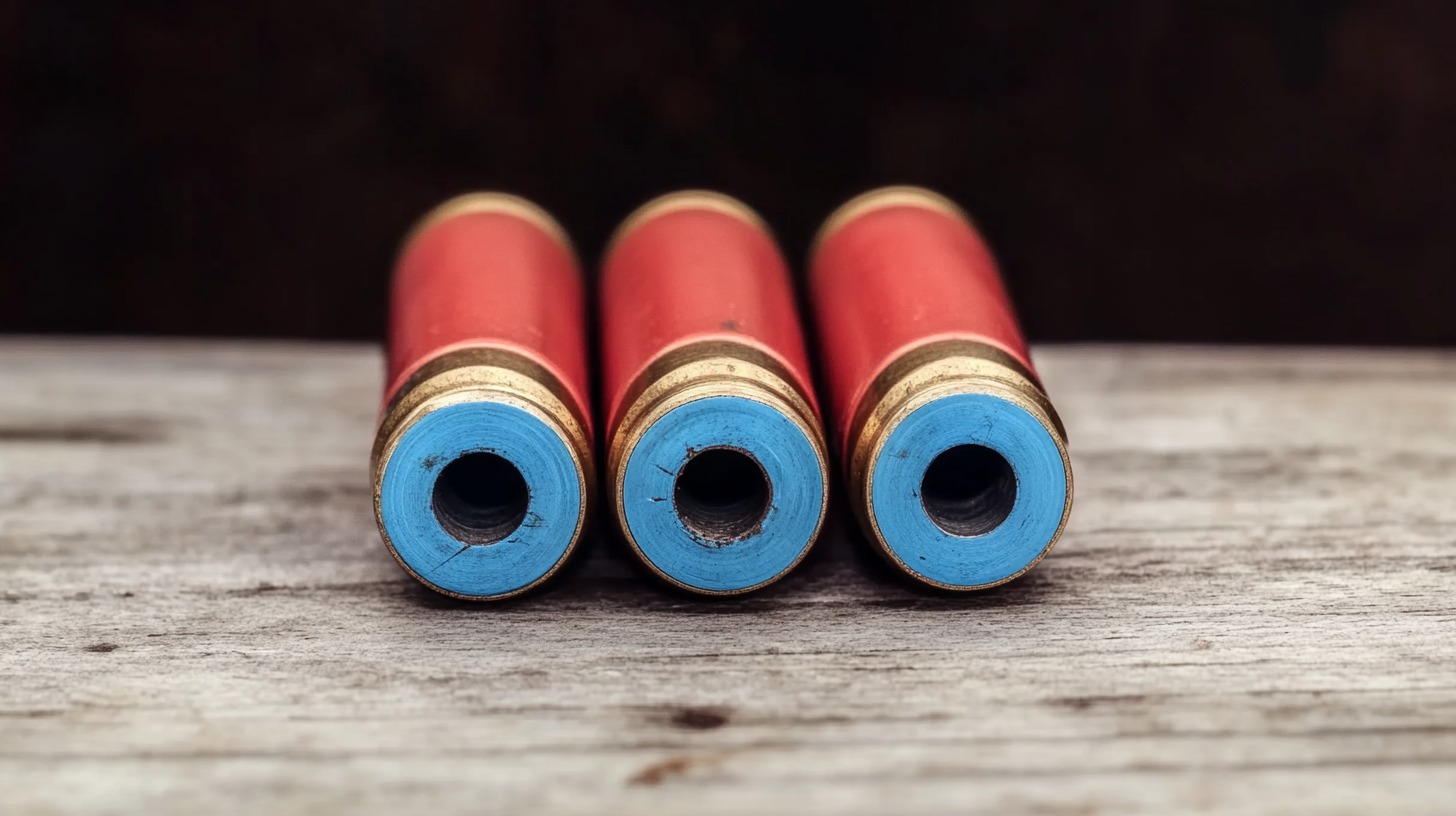
Understanding the components and gauge selection helps shooters make informed decisions, ensuring their shotgun performs reliably for its designated use.
Birdshot
Birdshot ammunition consists of numerous small pellets designed to spread quickly after leaving the barrel, making it ideal for hunting small game, upland birds, and target sports like skeet and trap shooting.
The pellets’ small size and wide dispersion ensure coverage over a broad area while minimizing damage to the meat of smaller animals.
Common birdshot pellet sizes range from #9 (smallest) to #2 (largest). Smaller pellets like #8 or #9 are ideal for clay shooting and small birds such as doves and quail. Larger sizes, like #4 or #2, work well for bigger birds such as ducks and geese at medium distances.
Regulations heavily influence birdshot material due to environmental concerns. Lead remains a traditional choice for its density and performance but is increasingly restricted in certain areas, particularly for waterfowl hunting.
- Steel: Lightweight and cost-effective, though it lacks the density of lead.
- Bismuth: Offers a performance similar to lead, with a balance of weight and ballistic efficiency.
- Tungsten: The densest alternative, providing superior penetration but at a higher cost.
Hunters and shooters must check local laws to ensure compliance when selecting materials.
Proper selection of birdshot size and material helps achieve the desired performance while adhering to legal and environmental standards.
Buckshot
Buckshot consists of larger, heavier pellets designed for applications requiring greater stopping power and deeper penetration. Unlike birdshot, buckshot has fewer pellets, but each one delivers significant force upon impact, making it suitable for hunting medium to large game and self-defense scenarios.
Buckshot is widely used for deer hunting, predator control, and tactical purposes, offering a balance of power and pellet spread at close to moderate ranges.
Common buckshot sizes include #4 Buck, #1 Buck, and 00 Buck. The widely used 00 Buck contains nine .33-inch pellets in a 2¾-inch shell, delivering a powerful punch suitable for deer hunting and tactical applications.
For home defense, buckshot offers a reliable option due to its balance between spread and penetration. At short distances, it can incapacitate threats while minimizing the risk of over-penetration compared to slugs.
When choosing buckshot for home defense, shooters must consider the shotgun’s spread pattern and range. Shorter barrels typically produce a wider spread, while specialized chokes can help tighten the pattern for accuracy.
Penetration is also crucial, buckshot is powerful enough to penetrate walls, making situational awareness essential for safety. Hunters and homeowners alike value buckshot for its effectiveness, making it a go-to choice for situations requiring immediate stopping power.
Slugs
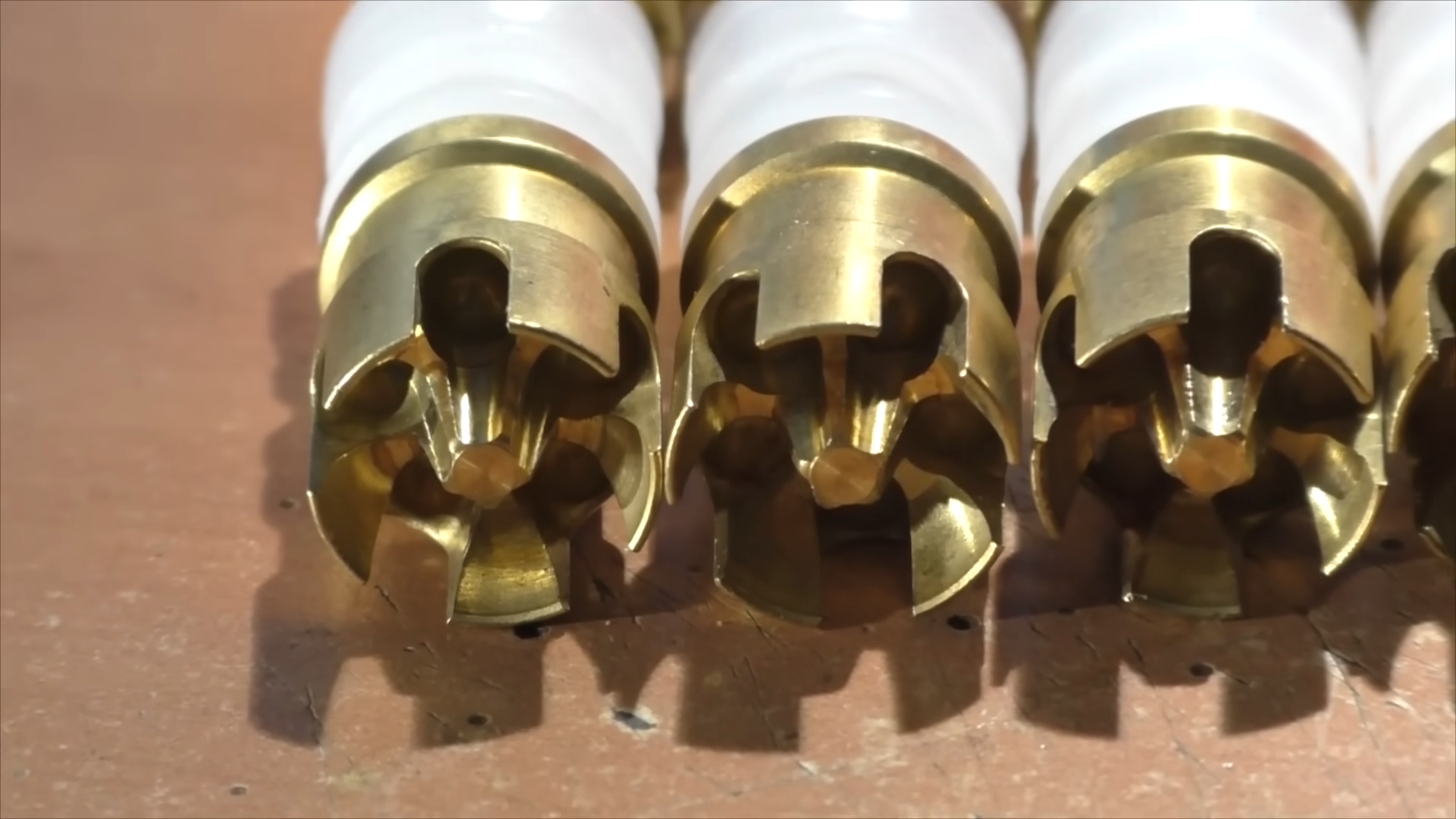
Slugs are single, large projectiles designed for maximum impact, range, and stopping power. Unlike birdshot or buckshot, slugs do not disperse upon firing, traveling in a straight trajectory for longer distances.
That makes them ideal for hunting large game such as deer, wild boar, and even bears, as well as for tactical applications requiring pinpoint accuracy.
- Rifled Slugs: These feature spiral grooves that enable rotation for stability when fired through smoothbore barrels.
- Sabot Slugs: Designed for rifled barrels, these slugs are encased in a plastic sleeve (sabot) that peels away after firing.
Slugs provide extended range compared to shot-based ammunition, reaching targets at 100 yards or more with proper accuracy. This long-range capability and devastating impact make slugs indispensable for specific hunting and tactical scenarios.
Choosing the Right Ammunition
Selecting the appropriate shotgun ammunition depends on several factors, including the intended use, target size, range, and local regulations.
- Birdshot excels for hunting small game and target shooting, offering a widespread ideal for fast-moving targets.
- Buckshot, with its larger pellets, is best suited for medium-sized game and home defense, where stopping power at close range is critical.
- Slugs provide precision and penetration at extended distances, making them ideal for large-game hunting and tactical applications.
The type of game or target and the distance at which you plan to shoot should determine your ammunition choice. Small, fast-moving game like birds call for birdshot, while medium-sized animals or home defense require buckshot.
Slugs are necessary for larger targets at longer distances, providing unmatched accuracy and stopping power.
Patterning a shotgun is an essential step in selecting ammunition. By testing different loads, shooters can observe how shot patterns behave at various distances, ensuring accuracy and effectiveness.
Factors such as barrel type, choke selection, and ammunition load impact performance, so thorough testing is key to achieving desired results.
Local laws and regulations often dictate ammunition choices, especially concerning non-toxic materials and hunting restrictions. Shooters must familiarize themselves with these requirements to maintain compliance and ethical practices.
The Bottom Line
Shotgun ammunition varies significantly in design and purpose, with birdshot, buckshot, and slugs each serving distinct applications.
Selecting the correct ammunition ensures optimal performance, safety, and compliance with regulations.
By understanding these differences, shooters can make informed decisions that align with their specific needs.

